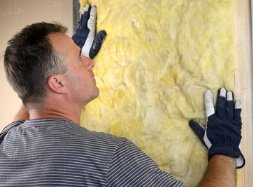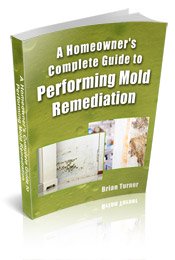Find a Mold Specialist Now
Click or Call, Toll-Free 24/7
Cleaning Mold And Mildew
Cleaning mold and mildew is not as easy as the television commercials for cleaning products make it sound. The best method to clean mold and mildew is actually a matter of debate, with different people having different opinions. Some think it’s a simple job you can handle yourself with a cleanser available at any grocery store. The Environmental Protection Agency (EPA) has a somewhat different opinion, though. They say if you have mold covering only a small area, you can attempt to clean it yourself but that if the mold covers an area greater than three feet by three feet, you should call a professional.
Cleaning mold and mildew thoroughly and properly is important because mold can contribute to the development of many illnesses, including respiratory infections, asthma, migraines and depression.
The Best Method to Clean Mold and Mildew
The best method to clean mold and mildew depends on a number of factors; there’s not one technique that works in all situations. For instance, the best method for cleaning mold and mildew off your shower walls is not the same as the best method for cleaning mold and mildew that’s growing inside your bathroom walls. Obviously removing mold inside walls is a much more difficult job.

Cleaning Mold from Hard, Non-Porous Surfaces
Mold can usually be cleaned from hard, non-porous surfaces like tile by scrubbing it with a non-ammonia soap until all visible mold is gone, then disinfecting the surface with a powerful disinfectant. You can find a variety of disinfectants that are specifically for mold at your local hardware store.
Keep in mind that you may not be able to see all the mold growing on hard surfaces in your home. For instance, mold often grows inside heating ducts where it cannot easily be seen. The EPA recommends using a professional mold removal company when mold is found in HVAC systems.
Best Method to Clean Mold and Mildew from Semi-Porous Surfaces
Cleaning mold and mildew from semi-porous surfaces like the studs in your walls is more challenging. Scrubbing does not usually remove all the mold. You can sand off the visible mold, but make certain you wear a protective face mask while doing so. You also want to make sure that the area you are working in is secured with large sheets of plastic and duct tape, so that any mold spores that become airborne will not contaminate other areas of your home. After removing all visible mold, you should still use a powerful disinfectant on the area because mold and mildew can seep into the wood where it can’t be easily seen.
Cleaning Mold from Porous Surfaces

Cleaning mildew and mold from porous surfaces like furniture, carpet, insulation and drywall is very difficult and often simply cannot be done. In many cases, those materials must be removed and replaced. If you have to remove moldy materials from you house, make sure you enclose them in heavy-duty trash bags first so that you don’t spread mold spores while carrying the materials through the house. Most professionals recommend that you double bag moldy materials to be extra safe.
Keep in mind that you may not be able to see mold in some porous materials, like the insulation inside your walls. A professional can test to see if you have hidden mold in any places like that.
When to Call a Mold Removal Specialist
The EPA recommends calling a mold removal specialist if you have mold covering a large area, if you have mold in areas you cannot adequately reach to clean (like inside your heating ducts) or if mold has grown in an area that has been flooded by contaminated water of some sort (like water containing sewage). Professional mold removal specialists will know the best method to clean mold and mildew in such cases and will have special equipment needed for tough jobs.
We recommend all homeowners with a mold problem schedule a free consultation with a mold removal specialist because even if you plan to do the job yourself, you can get valuable information and advice from a free meeting with a professional. A mold removal specialist can make sure you’ve located all the mold in your home and can also let you know about any special safety precautions you need to take during the cleanup process. For a list of mold removal specialists in your area, just follow this link.
Return From Cleaning Mold And Mildew To Our How To Remove Mold Page
Black Mold Health Symptoms Home Page





